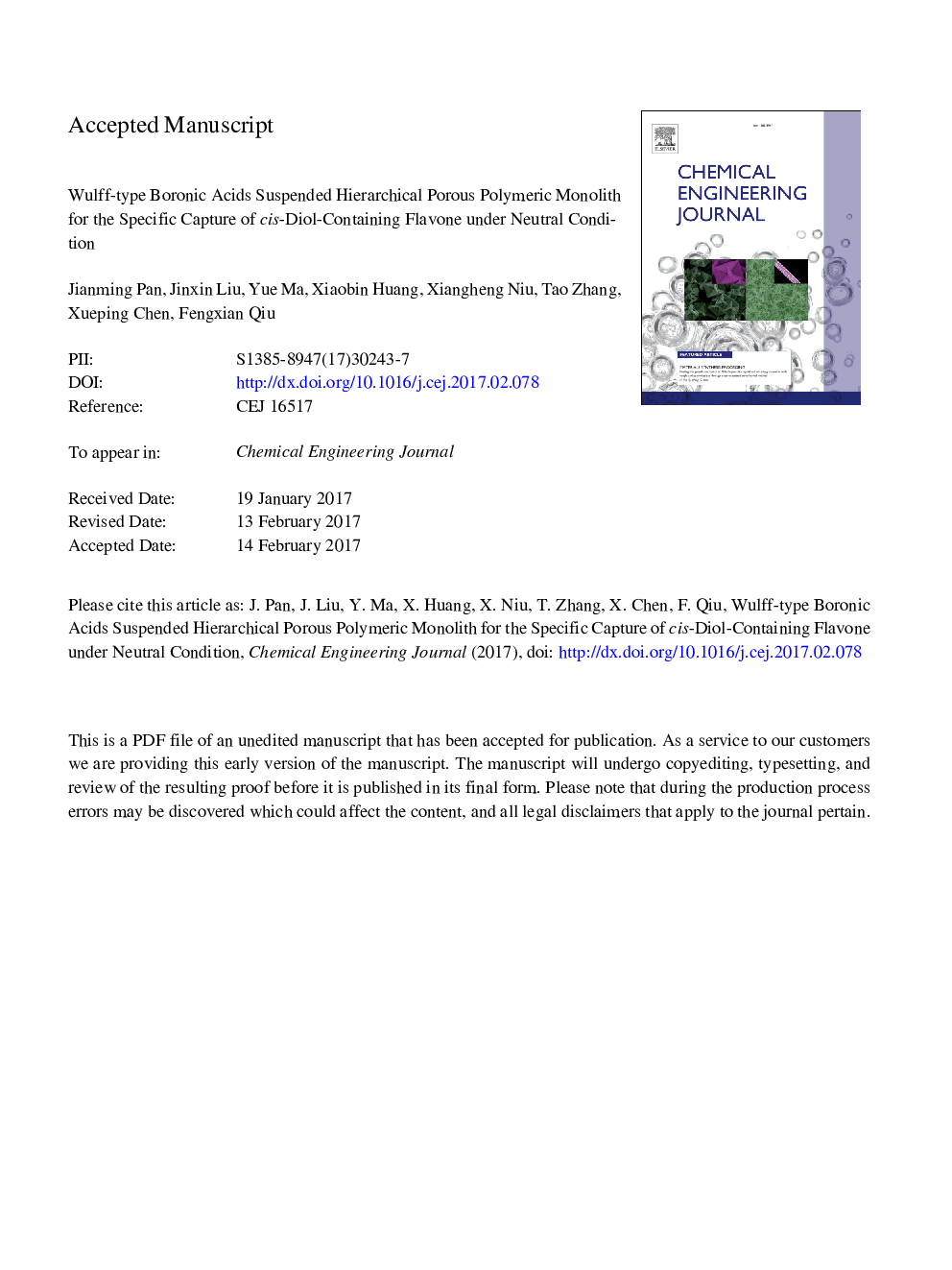| Article ID | Journal | Published Year | Pages | File Type |
|---|---|---|---|---|
| 4763219 | Chemical Engineering Journal | 2017 | 34 Pages |
Abstract
An apparent disadvantage of boronate affinity is that it has to be performed in alkaline media and can lead to the oxidation of cis-diols in compounds. A new strategy named as post functionalization with B-N coordination complex was present to prepare boronic acid suspended macroporous polymeric monolith for the selective capture of cis-diol-containing luteolin (LTL) under neutral condition. In this work, a water-in-oil (W/O) Pickering (high internal phase emulsions) HIPE template stabilized by boronic acid suspended mesoporous silica nanoparticles (BA-MSNs) was applied to prepare macroporous poly(glycidyl methacrylate) monolith (PGM-Pickering-0.10), and then B-N coordination complex resulted from the reaction of 3-aminophenylboronic acid (APBA) and 1,6-hexamethylenediamine was integrated to the PGM-Pickering-0.10. As-prepared hierarchical porous PGM-Pickering-0.10-BN with “Wulff-type boronic acids” possessed special mesopore-in-macropore structure. In static adsorption, pH-dependent adsorption experiments demonstrated that PGM-Pickering-0.10-BN was able to capture LTL with expected high adsorption amount (158.5 µmol gâ1 at 298 K) and fast binding kinetics (equilibrium in 2.0 h) under neutral condition, while macroporous polymers without post functionalization or functionalized only with APBA display poor adsorption performance at pH = 7.0. In addition, BA-MSNs as the stabilizers enhanced the mechanical property and specific adsorption ability of PGM-Pickering-0.10-BN simultaneously, and the integrated B-N coordination complex did play vital roles in the specific adsorption of LTL. By optimizing dynamic adsorption factors with response surface methodology (RSM), the maximum adsorption amount of 177.8 µmol gâ1 was also achieved under neutral condition.
Related Topics
Physical Sciences and Engineering
Chemical Engineering
Chemical Engineering (General)
Authors
Jianming Pan, Jinxin Liu, Yue Ma, Xiaobin Huang, Xiangheng Niu, Tao Zhang, Xueping Chen, Fengxian Qiu,
